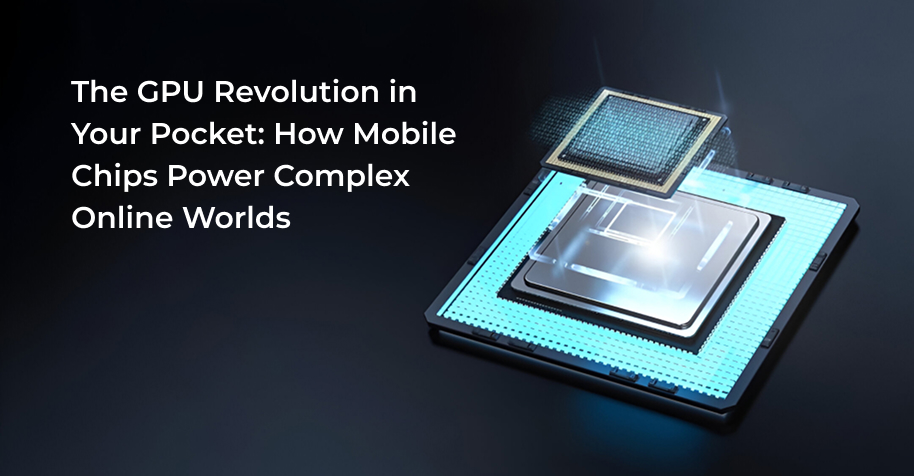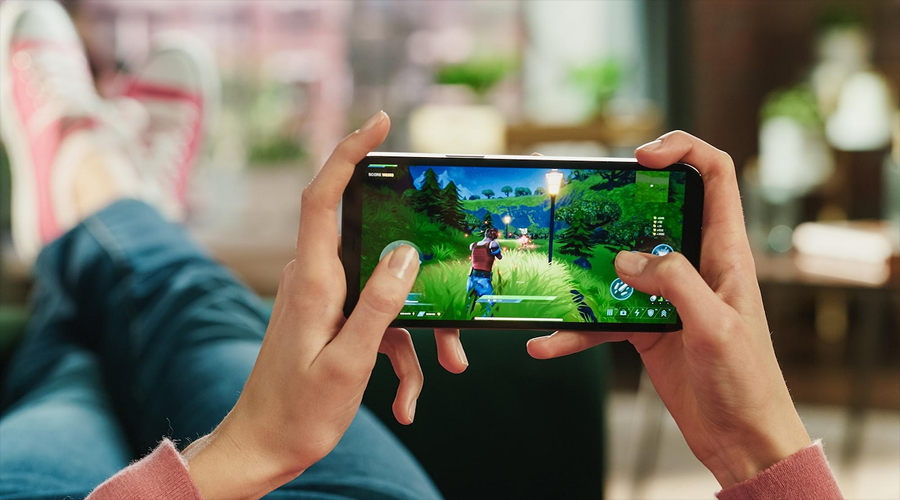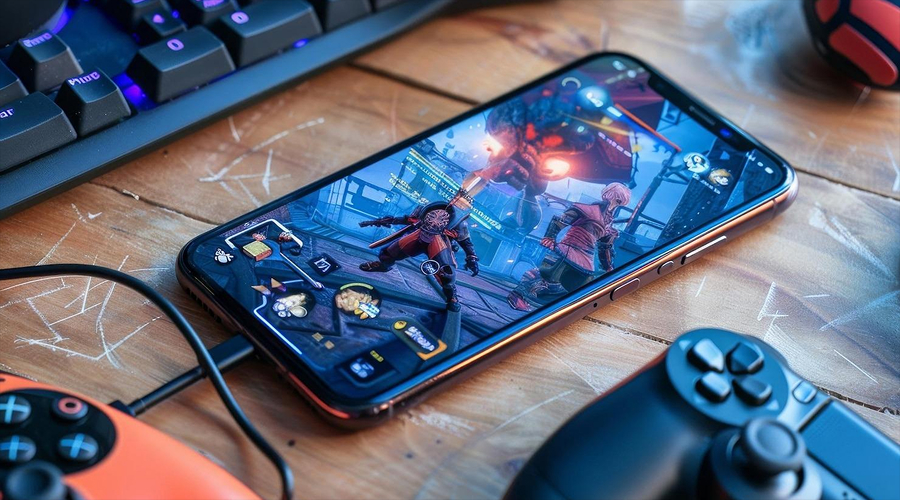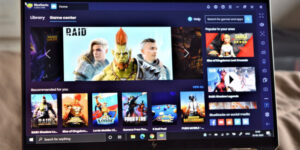
Your phone handles sprawling virtual environments that would’ve required a desktop rig five years ago. The performance gap between phones and gaming PCs shrank so much that most players can’t tell the difference anymore. Mobile chips handle visuals, gameplay, and packed online matches with speeds that would’ve made console gamers jealous a generation ago.
Raw Performance That Actually Matters

Paper specs look impressive until you actually play games. Genshin Impact runs super smooth with maxed settings on flagship phones, drawing open worlds that stretch for kilometers. PUBG Mobile handles hundreds of moving objects, buildings blowing up, and 100-player battles without breaking a sweat. Call of Duty Mobile delivers console-level visuals with impressive lighting and fancy effects that would’ve tanked mobile devices three years ago.
Also Read: Next-Generation AI — Personalized Gaming Experiences in iGaming
Mobile chips went a completely different direction than their desktop cousins. Modern phone chips break the screen into chunks and work on each piece separately. This approach uses way less power than the old way of doing things. Your phone runs super smooth for hours while staying cool enough to hold comfortably.
Graphics Features That Were PC-Exclusive
Better lighting hit mobile devices in 2023. This stuff tracks how light bounces around 3D spaces, creating reflections and shadows that look way more realistic. Immortals of Aveum Mobile showed off impressive reflections on water and shiny surfaces.
Some tricks dump less detail into the edges of your screen where you won’t notice anyway. This can boost performance significantly without looking worse.
The Online World Challenge
Multiplayer games hit phones differently than solo experiences. A solo adventure loads everything ahead of time and adjusts the graphics for specific moments. Online worlds juggle unpredictable player chaos, network lag, and dozens of character models bouncing around the screen at once.
Games like Second Life showed how appealing persistent virtual worlds could be, where players create content and interact freely. Phones couldn’t handle these worlds for years, choking on the mix of complicated visuals, player-made stuff, and constant online activity.
Modern phone chips flipped that script entirely. Roblox runs smoothly on mid-range phones, letting millions of players explore user-created worlds with varying levels of optimization. Your phone chews through whatever visuals players throw at it, whether it’s basic blocky stuff or elaborate architectural pieces with fancy lighting.
MMORPGs made the jump to mobile without losing much. Black Desert Mobile draws hundreds of players in town hubs with complex characters and flowing cloth. The game loads the world smoothly as you travel, bringing in new areas without loading screens. Your phone’s graphics paint a full circle around your character, cutting invisible objects to keep performance smooth.
Battle royale games pushed mobile phones the hardest. 100 players dropping onto a massive map needs the game to show distant stuff in less detail. Far-away players show up as simpler models. The terrain pumps crisp textures to the ground beneath your feet while distant hills get compressed versions. Your phone juggles all this math every frame.
What Makes This Performance Possible
Chip makers made things way smaller, cramming more components into the same space. Modern flagship chips pack billions of transistors into something smaller than your fingernail.
Mobile chips let the phone grab data straight from its main storage. Traditional PC setups copy data between different places, which takes extra time. Mobile devices share storage between different parts, skipping that delay.
Better software interfaces unlock performance that raw chips alone can’t deliver. Modern development tools give developers more control over how the phone does its job. Games can group drawing instructions together, reduce unnecessary work, and load stuff while other parts of the frame are being drawn.
Android Games Push Phone Limits

Android games run on everything from bleeding-edge flagships to budget phones barely keeping up. Game engines walk a tightrope, scaling graphics across this wild performance gap without breaking the experience.
The latest game engines run on mobile devices now. Better lighting and impressive visuals work at lower settings but all the important stuff is still there. Developers can build convincing environments that work on everything from flagship tablets to budget smartphones. Your phone’s chip crunches through the visual work while clever loading tricks keep things running smooth.
Popular game engines give developers lots of control over visual features. Games flip certain effects on or off depending on what phone they find. A flagship phone gets fancy fog, nice reflections, and crisp shadows. A budget device cuts the expensive stuff but keeps things running smooth. The same game file works on hundreds of different devices.
Gaming Features Built Into Phones
Screens got faster right alongside the chips. Fast screens eat up what the phone can produce like crazy. Your phone has to draw quick enough to keep up with that screen. Variable sync tech matches the screen with what the phone outputs, getting rid of screen tearing.
Touch response rates hit crazy speeds on gaming phones. Your phone responds to player inputs super fast. How smoothly things run matters a lot. Locked smooth performance beats wildly bouncing speeds any day.
The Latest Shifts in Mobile Gaming

Lighting keeps getting better. Today’s mobile lighting tricks only bounce light once for reflections. Newer chips already chase light through multiple bounces, unlocking impressive lighting that rivals desktop quality. Mobile and PC graphics look basically the same to most players now.
AI-powered graphics tech is changing how games look. Instead of traditional visuals and surface images, phones can create convincing imagery from compact AI models. Some experimental games already use AI systems that draw characters differently depending on the angle and lighting, skipping traditional methods entirely. The storage savings alone are huge.
Cloud gaming pushes the heavy graphics to remote servers but gameplay, controls, and interface stuff still happen on your device. Your phone handles the stuff that needs instant response while the cloud grinds through the heavy graphics work.
Games like Second Life and other persistent virtual worlds already run on mobile. Phones spent years chasing developer ambitions and finally caught them. Thousands of players hang out in spaces packed with custom content without watching performance crater. The social gaming shift happened once anyone with a phone could access these worlds anywhere.
Also read: Mobile Gaming despite of having High Demand in the market is being controlled by Apple
The Real Performance Gap
Mobile phones get smoked by dedicated gaming PCs on paper. A desktop RTX 4090 delivers way more raw power compared to what phones can do. Phones can’t cool as well as desktops, which limits how long they can run at maximum power. Battery life also forces compromises that plugged-in systems don’t deal with.
These gaps matter less than they used to. Most gaming happens at moderate or lower quality on mobile screens. Smaller screens mean phones squeeze out visuals that rival PC gaming at way higher quality levels. Your eyes can’t see individual pixels at normal phone viewing distances anyway. The experience feels pretty much the same even if the raw specs look different.
Developers handle mobile platforms differently. PC games push graphics as far as possible knowing players have big cases full of fans and no battery worries. Mobile games prioritize smooth performance without sacrificing how good things look. Good art style, solid programming, and clever ways of loading stuff make games look great even when phones aren’t amazing. Working within tight limits often spawns more creative visual solutions than just throwing more power at problems.
What This Means for Players
You can play console-quality games on the bus. Your phone packs horsepower that would’ve needed a gaming laptop recently. Impressive mobile games hit app stores every week. Developers treat mobile as a real gaming platform now.
Cross-platform gaming is normal now. Play on your phone during your commute then pick up where you left off on your PC at home. Your progress syncs across devices. Platform barriers broke down.
Mobile gaming isn’t a compromised version of “real” gaming anymore. It’s just gaming. Phones got past the limitations that kept mobile titles simple and casual. Whatever type of game you want to play exists in a quality mobile version. Your phone makes that possible.






